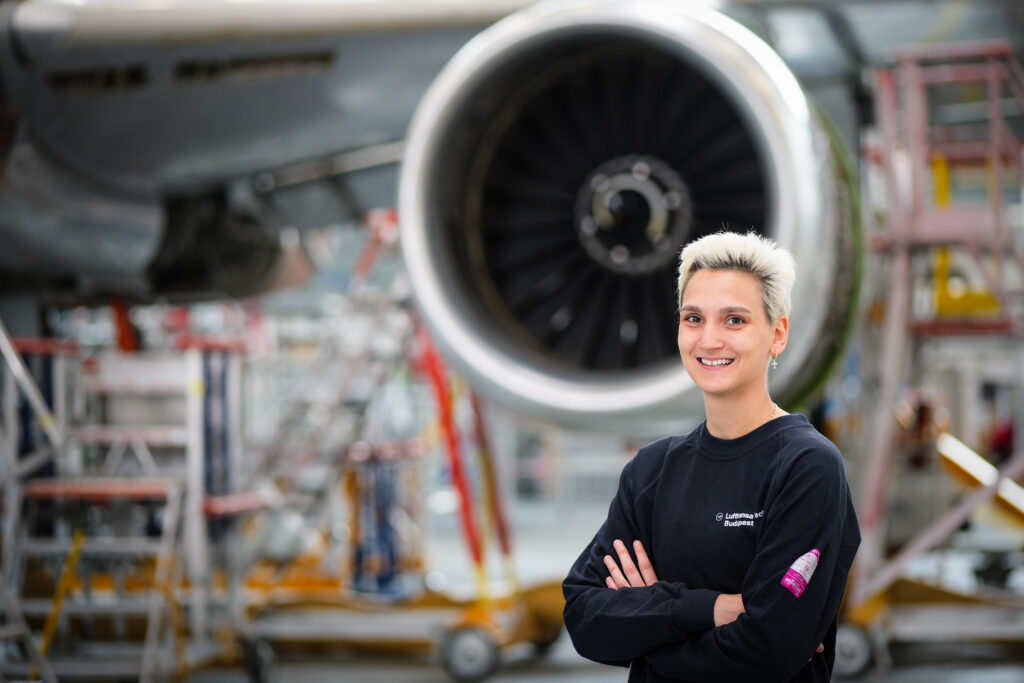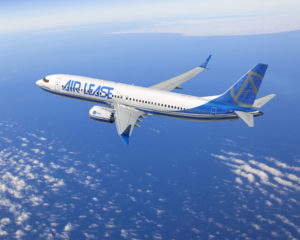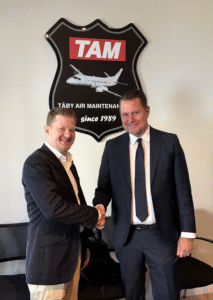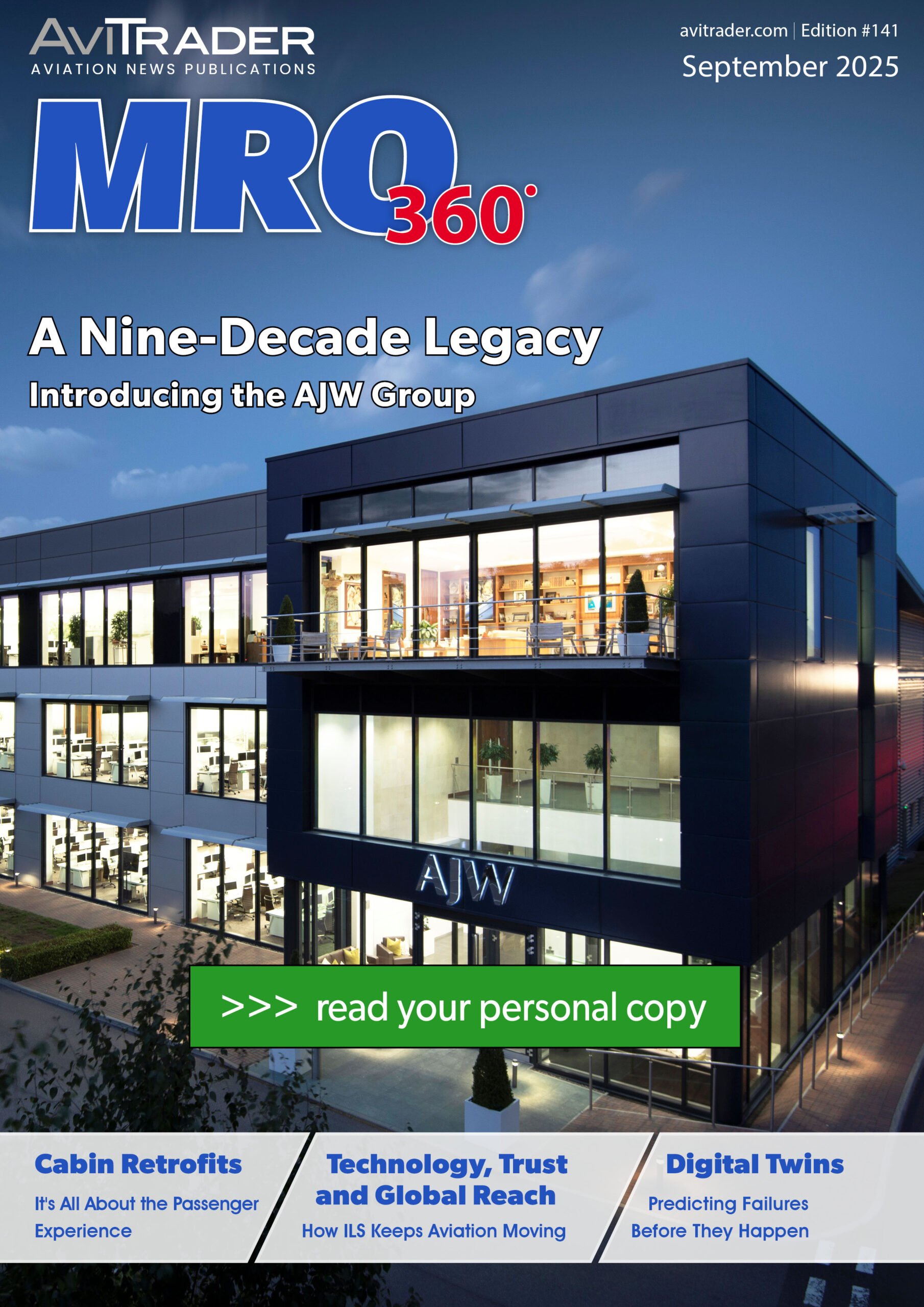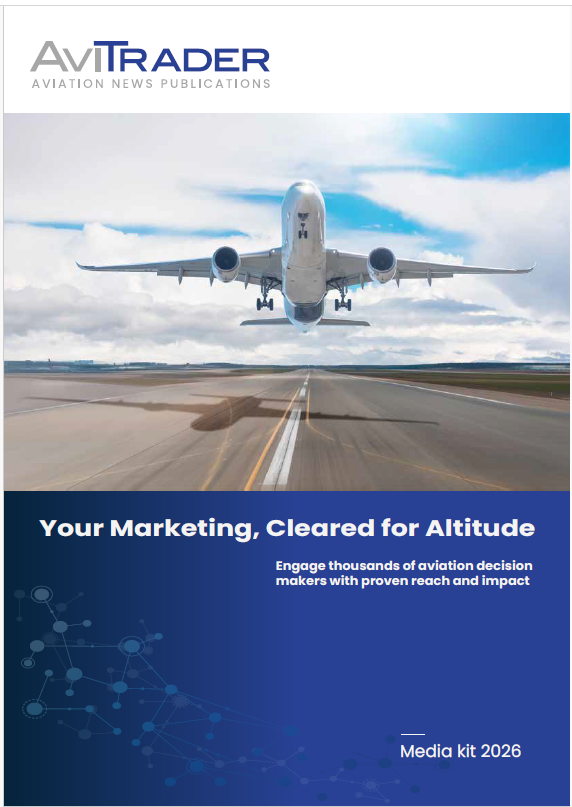The Road less travelled – an overview of ‘women’ in aviation maintenance
By: Swaati Ketkar
When I first heard this topic from my editor, a wave of relief washed over me. How difficult could it be to find women working in the aerospace maintenance, repair and overhaul (MRO) sector? A little research left me in shock as, according to Federal Aviation Administration statistics for 2021, only 2.6% of all aircraft maintenance technicians (AMTs) are women.
Armed with this figure I realised my search for women in aviation maintenance was not going to be easy, and thus began my hunt. I searched for women spread across various leadership roles in the MRO industry, right from a president, to a mid-level executive, to a trainee engineer. The perspective of these remarkable women revealed some interesting facts about the industry.
Why is Women’s representation in MRO sector negligible? Is the tide turning now?
A further probe revealed a slightly more optimistic fact. A recent survey by the International Civil Aviation Organisation by gender revealed that the percentage of female aircraft maintenance engineers and technicians rose from 2.7% to 3.0% worldwide, with an increase across all regions except the Middle East and Africa. Interestingly the highest increases in this area were again recorded in the Latin America/Caribbean and Asia Pacific (APAC) regions, with APAC crowned as having highest global percentage of licensed female aircraft maintenance engineers and technicians with 4.4%.
Although the worldwide figures for women in MRO are increasing, the percentage is miniscule when compared to the demand. According to Oliver Wyman, the world will witness a shortfall of between 12,000 and 18,000 aviation maintenance workers with the imbalance between supply and demand likely to worsen over the next ten years, resulting in fewer flights, greater numbers of delays and cancellations, or airlines having to compensate by keeping more spare aircraft and parts on hand.
Wyman’s survey also predicted that 2027 is projected to be the worst year for the shortage with a supply deficit of more than 48,000 aircraft maintenance workers, or a shortfall of about 27%.
Despite such mind-boggling numbers and the looming shortage, why are there so many fewer women in the MRO sector? “It is important to get young women exposed to the aviation industry and the opportunities out there by generating interest early on in science, technology, engineering, and mathematics (STEM),” explains Kim Ashmun, president of the components and accessories division at Standard Aero. “My interest in science and engineering was piqued as early as high school which led me to pursue an undergraduate degree in engineering and, eventually, a job in the aviation industry. It is important to support and advocate for young women in STEM fields to not only help build their passion, but also their confidence early on,” asserted Ashmun.

Ashmun’s opinion was voiced byElaine Chan Yee Lian, project manager at ST Engineering’s airframe MRO facility in Guangzhou, China. Her experience over the years was that the ratio of women in the industry is increasing but there is no massive influx of female talent. On asking about the reason for this, Yee Lian said: “This is a tough industry even for men.” As doubts clouded my thoughts over this sentence, she happily continued that times are now changing. “It is becoming more common to find a woman working in the hangar or front line of aviation MRO, which is a sign of progress.”
Speaking on the changing mentality and attitude of society towards the evolving role of women in aviation maintenance, lead engineer at FL Technics, Jolanta Gaske said: “Well, every year, the number of women increases! Attitudes among the public are also rapidly evolving. There is a far smaller difference in the jobs held by men and women.” On a lighter note, she added: “An aircraft does not know if you are a man or a woman, how you do your job is of utmost importance. When performing plane inspections, there is no room for errors so I fall back on my training to find hidden flaws.”
Gaske further stressed on having a deep passion for the job at hand: “It is not enough to complete your studies at university,” she continued. “The study is followed by a lot of training abroad and in-house. The work also requires physical endurance. Working in confined spaces like fuel tanks or on top of aircraft, you have to do everything correctly.”

The more important point to note here is – If an aircraft does not differentiate between a man or a woman, why should we? Have we read articles on Men in Aviation Maintenance? Then why is the topic of Women in Aviation Maintenance not seen on the same page, instead of glamorising all that is needed is a change in attitude and equal opportunity for both genders. These are some hard questions we need to ask the stakeholders to address and solve to see more women entering and excelling in aviation MRO.
However, things are slowing changing. For example, at Iberia Maintenance there is a notable representation of women. “Apart from our chief technical officer, out of the eight members of the executive committee, four of them are women,” said Teresa Montes Vicente, MRO Transformation Manager of the Technical Division at Iberia. The women at Iberia lead various departments like engine shop, heavy maintenance business, the transformation programme, safety & quality, and more.
Daiva Zemaite, Head of Engine Stands24 at Magnetic Group also feels that the industry is now on the verge of a significant change. “I encounter more and more women every year, if not monthly. This young generation is particularly ambitious and unafraid to challenge themselves and go after what they want. My take on the reasoning behind this is that the industry is highly technical in its nature, making the uneven gender division not an exception compared to other career paths.”

For a woman, is the career in aircraft maintenance by ‘choice or chance’?
Most women are stuck while making a career choice in early years. And the poor representation of women in MRO stems from the fact that there is insufficient awareness about aviation maintenance to attract young women to this field. Some women stumble upon this career path by chance or fate while some have family member already in the industry who are prepared to back and encourage them. For Ashmun, the big career break came when she joined Lockheed Martin as a manufacturing engineer after her bachelor of science degree in Engineering from Texas A&M University, and the rest is history. “I have spent over 20 years in the aviation industry, and I can’t think of a better career path,” claims Ashmun. “As I progressed, I realised that to advance on the technical path in my career I needed to not only have a depth of experience in engineering but, in parallel, to advance my education. I was always ready to take on the challenging assignments at work and, fortunately, was afforded great projects and opportunities to lead high-performing teams. Early on, I was focused on my technical career path and pursued a master’s degree while I was working full time. I ended up getting a master of science degree in Systems Engineering from Southern Methodist University (SMU). And, eventually, as I wanted to advance in the business and I pursued my MBA from SMU as well. A little over a year ago, I joined Standard Aero in my current role running the Components & Accessories division”.
For Davia Zemaite of Magnetic Group the offer to lead EngineStands 24 was by chance. However, her previous experience played a huge role. “For two decades, I worked in the car rental industry, so it being a means of transport as well, and together with leasing business experience, both served as a catalyst for my career in aviation. Aviation on its own has always had an appeal, where everything is precisely orchestrated, and it is an industry that is crucial to people,” Zemaite adds. “That was the time when I had the chance to be a part of developing a rather new product in the market: engine stands. All of this was a gratifying and simultaneously challenging process, encompassing creativity, business development, market insights, and product knowledge”.
Speaking about a distant childhood dream, Zemaite vividly remembers drawing a blue sky with an airplane and feeling it was a dream career. Back then she dreamt of being a pilot, and in a way, she found her calling in aviation.
For ST Engineering’s Yee Lian, venturing into the field of aviation maintenance was well-thought off decision. “I wanted a career with good prospects and aviation MRO fit my requirements. I already knew that I would most likely join a ‘male-dominated career line’ given my degree in electrical and electronic engineering, but I am determined to follow my passion, stereotypes notwithstanding.”
As a young girl, Yee Lian was inspired by the movie Amelia, depicting the story of aviation pioneer Amelia Earhart, the first female pilot to fly across the Atlantic.
For Kata Karba, a young trainee at Lufthansa Technik Budapest, her passion for aviation was kindled at the age of 12. Growing up in Canada with extended family in Budapest meant frequent air travel during early childhood. “First, I wanted to become a flight engineer, later I decided that I wanted to become a pilot,” she says. “On a Toronto-Frankfurt flight we had a female captain on an Airbus A340-600 which left me spell-bound. A few years later I discovered my interest in fixing things and realised there is a job which is the mix of the two things I really enjoy: aviation and repairing. So here I am now. In my free time I enjoy being a glider pilot, and I work for Lufthansa Technik maintaining the big planes.”
Societal perception of aviation mechanics as a male-dominated field could not sway Jolanta Gaske’s determination to become an NDT engineer. “My academic pursuits exposed me to the world of non-destructive testing (NDT) and gender stereotypes never factored into my choice; rather, it was the sheer fascination with the subject that drove my commitment.” Through her love for the subject, Gaske carved a niche for herself in the field. “I invested time and effort to realise my professional aspirations. While working alongside my male colleagues, I seamlessly integrated myself into the tasks at hand, where the focus was purely on collective contribution, devoid of any discussions about gender distinctions.” She knowingly smiles as she remembers her work and contribution to the organization. Teresa Vicente’s journey to Iberia wasfortuitous as she navigated the internship programme with SEPI (Sociedad Estatal de Participaciones Industriales). She considers herself lucky to have landed at Iberia. “I studied for a bachelor’s degree in Business Administration, with no engineering background, but I highlighted the importance of maintenance during the interviews, and as a result, I was assigned to the Line Maintenance Division. I was highly motivated from the beginning, as this represented a significant opportunity for me. And I’m proud to say, I was right. It was and it is a great opportunity for me. I have worked at Iberia for 11 years and have been lucky enough to have worked in different areas of MRO as Line Maintenance, Base Maintenance or Commercial and, now in the Transformation team.” For Vincente, every day includes a novel learning experience.

The challenges, then and now…
For most beginners the initial challenge is understanding how the industry operates in general, followed by familiarising themselves with the different technical aspects of an aircraft. Quick learning and easily blending in/ adapting to the work environment works wonders. However, if you need to climb the success ladder right to the top, education is more relevant than anything advises Engine Stands24’s Zemaite. “Since I wanted to dive deeper into aviation and acquire all this information quicker, I also obtained a degree in Aviation Finance and Lease at the University of Limerick.”
At present, there are growth and expansion challenges as every market has its own nuances, cultural differences, and distinct business environments. “From a border perspective, adjusting to the post-COVID industry has taken some time, getting back on track after this bumpy ride and defining the new normal for the engine stands business,” adds Zemaite. “Coping-wise, Covid has helped to strengthen stamina and agility; now, you always have a plan B. From the start, we’ve always had this innovation-forward approach by introducing a digital solution in a relatively conservative industry and easing the client’s journey. On a personal level, nature, dancing, and sports help me with daily challenges.”
A challenge could be as small as familiarising oneself with numerous technical terms and acronyms used within the industry as was the case for Iberia’s Vicente. “Currently, my challenges primarily involve the development of leadership skills. During my three-year period of leading the Iberia Maintenance Network, I was subject to daily pressures that involved 24/7 requirements and AOGs that impacted on the passenger experience. Since then, I have learned to put these pressures in perspective, and therefore, I no longer feel stressed,” she adds.
“Throughout my career, I have been thought carefully about the roles and opportunities I have taken on making sure not to advance too quickly without the right depth and breadth of experience for the next role. This can sometimes be challenging early on in someone’s career when you want to move up quickly but don’t have the right experience to enable you to be successful in that next role,” says Standard Aero’s Kim Ashmun after drawing a couple of decades of experience in aviation MRO. “Taking the time to be thoughtful in key decisions around what role and timing to further my career best prepared me for the role I have today,” she advises.
For most women, the work-personal life balance is the biggest challenge. Ashmun’s advice to tackle this challenge is to understand what you want and work towards that goal. “When I am asked for advice from early-career professionals, career planning is at the top on my list. It is so important to help provide direction and help someone navigate through their career. Most importantly, be in a position to make informed decisions about what’s next and how that next step can help you achieve your professional and personal goals!” she informs.
“Luckily for me, FL Technics provided the opportunity to get all the necessary training abroad to become an NDT engineer,” adds Gaske, Lead NDT engineer. “As for daily challenges, I can feel confident that all inspections will be carried out professionally and quickly.Working together with other departments around the world helps us solve problems together, which reduces stress.”
The day-to-day challenges can be very different from someone at a leadership role as compared to a trainee engineer. For Lufthansa Technik’s Kata Karba being the only girl in the class had its own challenges and insecurities. “I felt like the bar was set high as I had to prove that I am able to perform in a typically male-dominated field. Swiftly I became part of the class and I was able to share the excitement and passion during each day as we learned something new or prepared for exams.” Karba gradually overcame the challenge, gelled in with the team overcoming the daily on-job pressures. “Now I don’t feel any differences regarding gender. I am very confident in my abilities and I can carry out work without any fear of rejection from other colleagues.”
People in the field tend to perceive women in the industry from two extremes, either feeble and delicate or masculine/boyish. “When I first joined the industry, I had to strike a balance so that male colleagues or batch mates would treat me no differently just because of my gender. While working in the hangar as a trainee engineer, I often spoke up and requested to take on more work as I learn best through hands-on experience,” says Yee Lian of ST Engineering.
One of the best ways to deal with day-to-day pressures as explained aptly by Lian is envisioning the worse-case scenario and coming up with different plans and options. This will avoid panic attacks and ensure you make an informed decision with a cool head.

Golden words of wisdom, – why one should join or pursue AME as a career-option?
While reading this heading, ‘Women in aviation maintenance’, at a first glance this topic seems pretty simple and straightforward. However, deep diving into the lives of women in aircraft maintenance is an eye-opener for everyone. “Each day, as I step into the hangar, I am filled with a profound sense of joy, knowing that I am privileged to engage in a job I am genuinely passionate about. The beautiful sights and smells of the aircraft and hangers brings me immense satisfaction,” says FL Technic’s Jolanta Gaske. Driven by a strong sense of purpose, Gaske adds: “I hold a significant responsibility, as my daily efforts directly contribute to ensuring the safety of flights. Through NDT inspections, we discover imperfections that escape the naked eye. The timely detection and rectification of these defects is vital in ensuring the safety and reliability of air travel as one of the safest modes of transportation allowing us to enjoy secure and uneventful journeys through the skies,” she signs off.
“Go for it! There are countless opportunities in aviation,” advises Ashmun. “In my experience, building that technical depth of knowledge was important to me, but I also enjoyed the business side of things. Ultimately, that is what guided a lot of my decisions throughout my career. I really spent the time to understand what energized me at the end of the day and it was solving complex business problems with the team and seeing the results.” Speaking on the final mantra to follow your calling, Ashmun adds: “Always give your best, be fully committed to what you decide you want to do and lead with integrity. I had times that were challenging and didn’t always go to plan but, looking back, those were some of my greatest learning experiences and helped shape the leader I am today.”
All-in-all, women can make up for physical strength with greater resilience and attention to detail, and applying their strengths to overcome their weaknesses can turn them into advantages.
Advising and encouraging young girls to take up aviation maintenance as a career-option, Kata Karba adds, “After one year of classroom learning and training shops, I will finally lay hands on a real aircraft, which is a dream come true. Nothing can compare to this achievement.”
In the end all that matters is your love for aviation, not whether you are a woman or a man or what you studied in college. All it takes to succeed in pursuing a career in aviation maintenance is a strong desire and effort, Gaske signs off.
The struggles, the challenges, the ambitions and the inspirations of such women who dared to break the glass ceiling and venture into the male-dominated industry of aerospace maintenance, repair and overhaul is not just remarkable but an eye-opener in itself.
Magnetic Group’s Davia Zemaite sums it up beautifully by saying “Go, girl, go!” Simple, yet it implies that you should pursue your passion, regardless of the industry and your chosen career. There are a lot of supportive women in aviation, rooting for each other. Lastly, neither gender, age, nor religion should bind you or stop you from pursuing your dream career.”
These women and many more like them are the unsung heroes of aviation and aerospace, who dared to soil their hands and clothes with grease and oil, toiling for long hours under the stuffy atmosphere of a hangar but coming out with the ultimate reward of signing the airworthiness document of an airplane, signalling that the aircraft is now all set for take-off towards a safe journey ahead. Massive respect and big salute to them!

